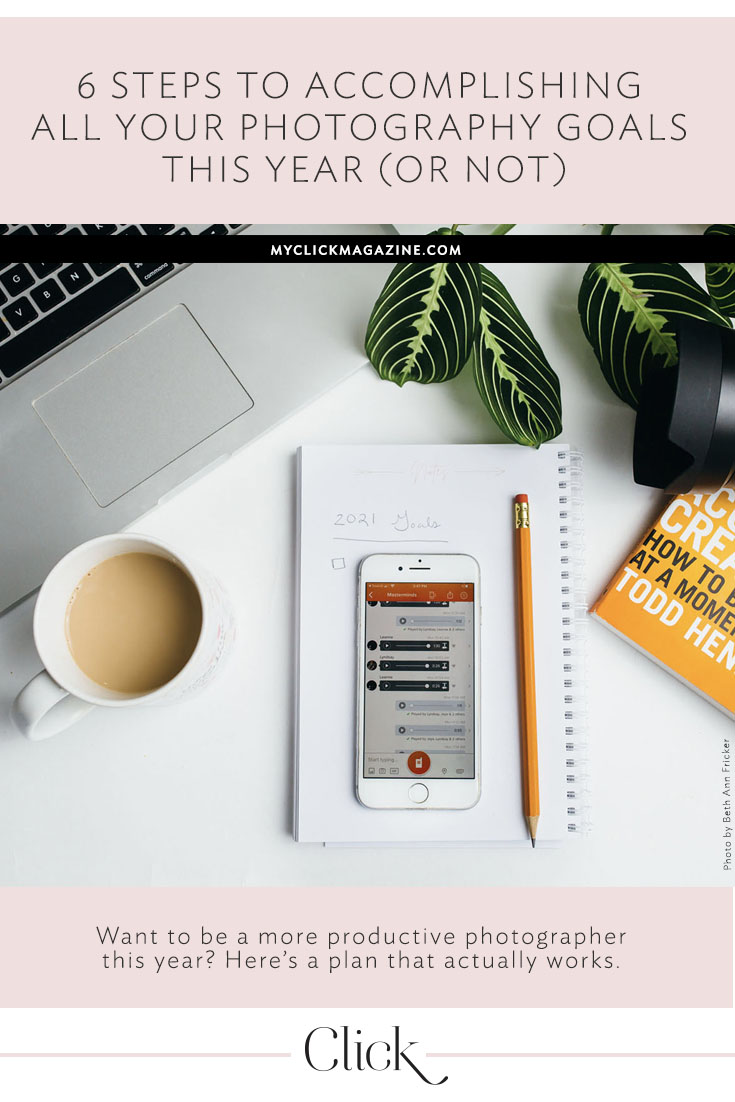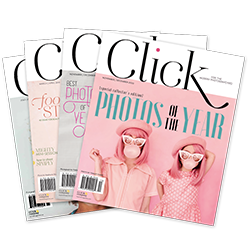Let’s face it, the past year or two were… a little different. But, it did give us the opportunity to really stop and think about our priorities and reflect on our photography. What went well? What didn’t? What do I want to do differently with my photography next year? What did I accomplish in 365 days? Thinking about these questions helps me plan out my year and make productive changes. I don’t think of this exercise as making resolutions, instead I think of making photography goals to keep me focused.
I use my goals as a reference throughout the year to keep me on track and continuously improve in my photography. You can set photography goals anytime throughout the year. January is a great natural starting point, but mid-year works great too. The important thing is just to start!
Here are some photography goal-setting strategies:
1. Start with a brain dump.
Begin your goal setting by writing down what’s in your brain. List every photography idea you have, everything you want to do, everything you didn’t do last year, amazing things you saw or read about recently, etc. Since I have been doing this for years, I like to refer back to my goals from the previous year and any journaling I did.
A lot of my goals are photography related but I find that it helps to focus on all areas of my life by breaking the brainstorm into categories — work (photography), home, friends, love and kids. These are the categories I use, but you can fine tune them to meet your needs. Thinking about other areas of my life besides photography helps to keep me balanced.

2. Prioritize your list.
Next, I take everything I wrote down and prioritize. What is the most important? What can I realistically accomplish? Are there themes? There is no way I will ever accomplish everything, so instead I pick a few areas to focus on.
Throughout the year, I’ll revisit my list and reevaluate. There are worksheets and programs that will help you do this but I’m fine organizing everything in a notebook.
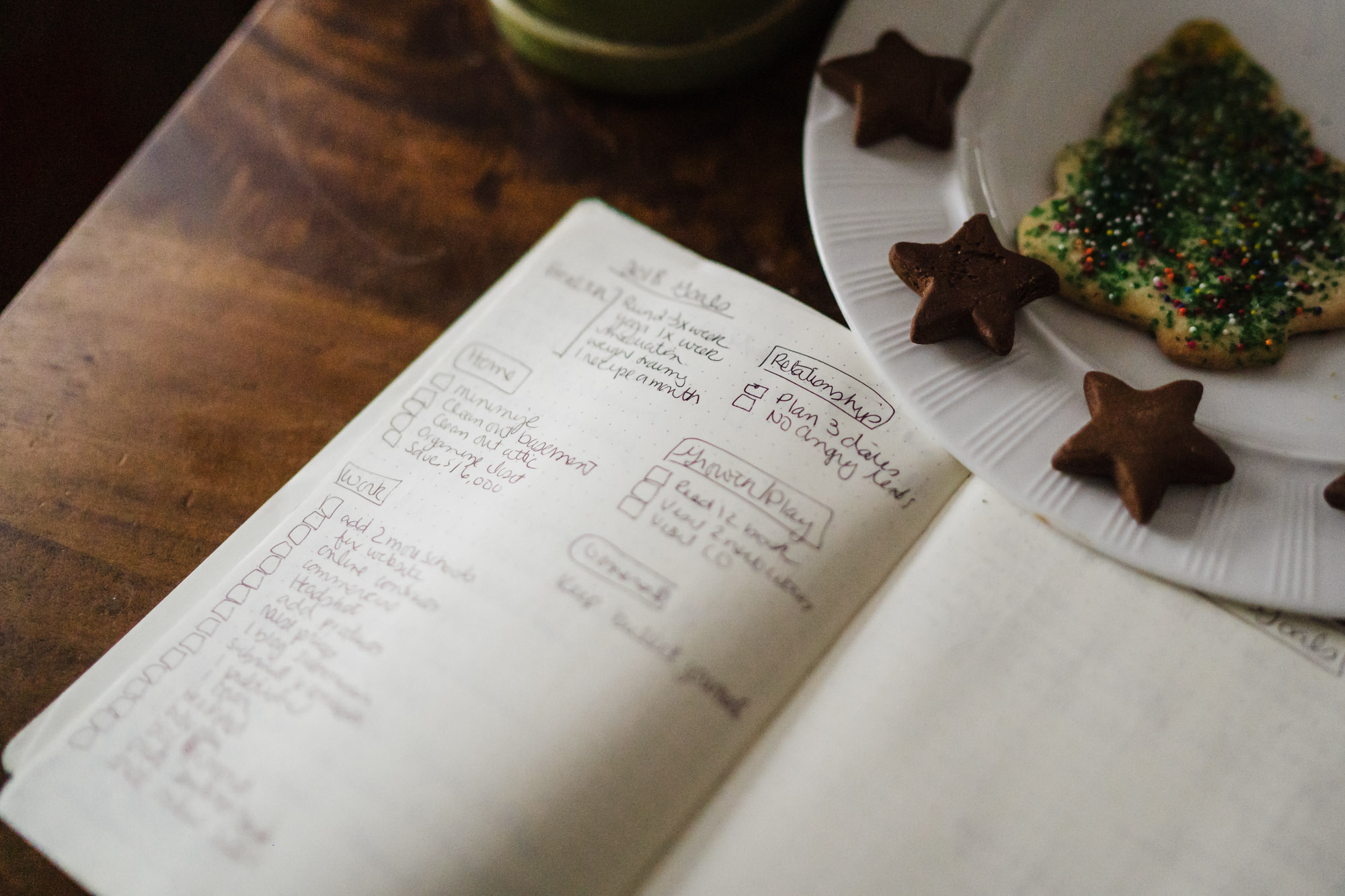
“There is a pretty clean formula for mediocrity. Simply stop doing the things that stretch you, stop asking questions, stop developing skills, and stop striving to discover your voice, and you will stumble upon mediocrity soon enough.” – Todd Henry from The Accidental Creative: How to be Brilliant at a Moment’s Notice
3. Create action steps for your goals.
Sometimes my “goals” look like a to-do list but there is usually a larger theme that these tasks fall into. The to-do list can be broken up into goals and actions. For example, last year on my photography goals list I had written that I needed to fix my website issues, blog once a month, create a Pinterest board, and get a headshot. That list was really action items to improve my SEO ranking on targeted keywords — my goal.
To help you along, think about using S.M.A.R.T. measurements. These can also help you assess your goals at the end of the year. You want to make sure your goals are Specific, Measurable, Attainable, Relevant, and Time-Bound.
For example, maybe your photography goal is to complete a 365 project; therefore, your action would be to take a photo every day for an entire year. Or, maybe your goal is to learn more about running your photography business, so your action would be to read one business book a month for a year and take a class. Or, maybe you’d like to have your work featured in a gallery, therefore your action could be to submit to one art show every quarter.
How you choose to organize your goals is up to you. I like to break mine up into daily actions, monthly tasks and larger goals. This helps prevent me from feeling overwhelmed.
Forming habits.
Some of my daily actions start to become ingrained and thus it becomes more of a behavior change or new habit. James Clear wrote a book called Atomic Habits, which discusses steps to take in changing both positive and negative actions in your life. Anyone who has completed a 365 photography project will tell you that taking a photo-a-day is now just something they do out of habit.
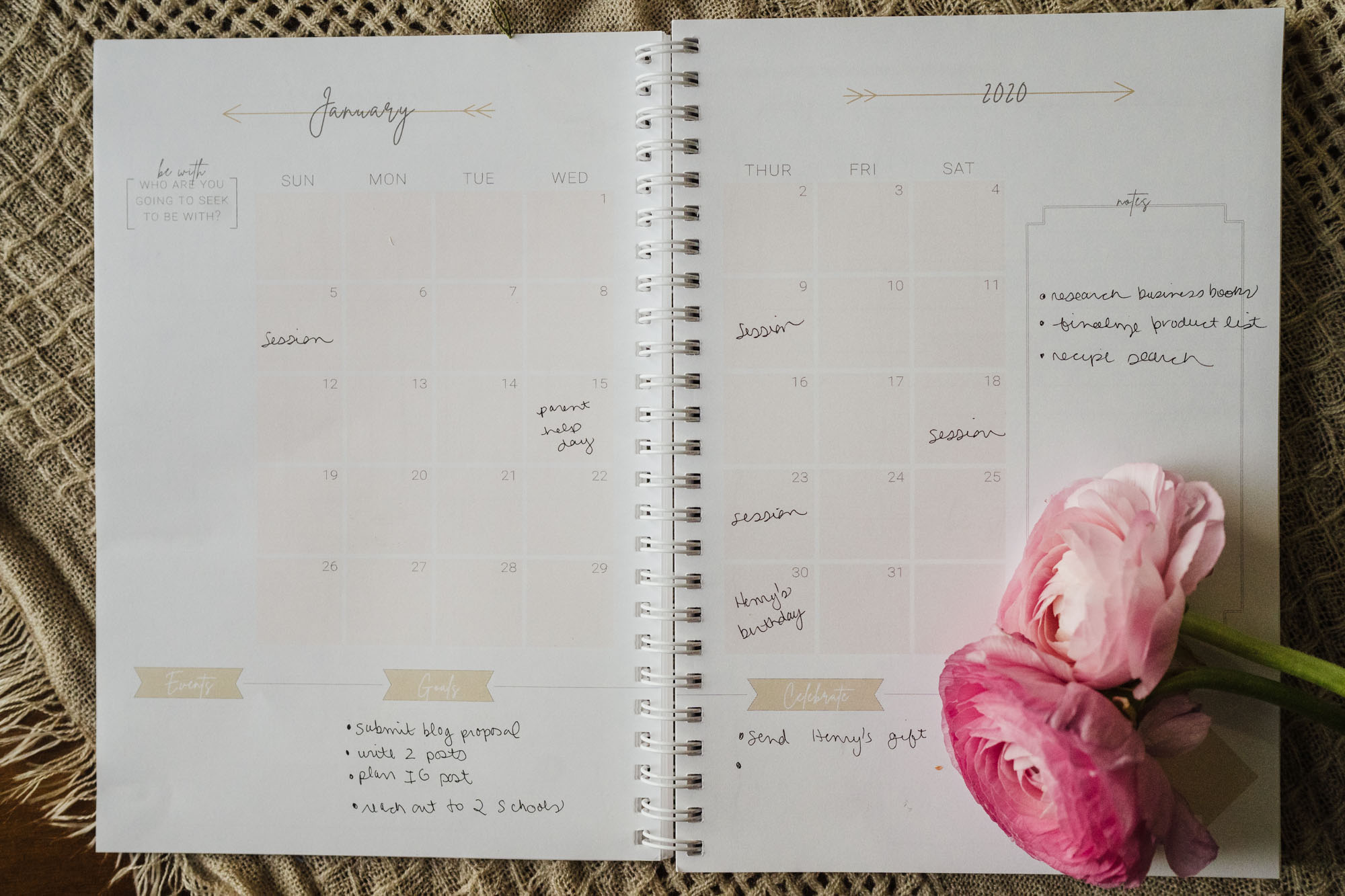
4. Don’t forget your “someday maybe” goals.
What are your dreams? Where do you want to be in five years? These aspirations don’t happen overnight. For me, having these “someday maybe” ideas written down is helpful. I can take small steps towards them over time so they don’t feel as daunting.
A few years ago, my “someday maybe” photography goal was to be published in Click Magazine. I started by writing blog posts for Clickin Moms and the Click blog, more obtainable first steps, which then led to being noticed and published in the magazine.
What are your long-term photography goals? Some examples could be to teach a workshop, write a breakout, be on a magazine cover, take your business from part-time to full-time, or to expand into commercial work. The list is endless. To achieve a “someday maybe” goal, break it down into smaller projects which can be prioritized and achieved over multiple months or years.
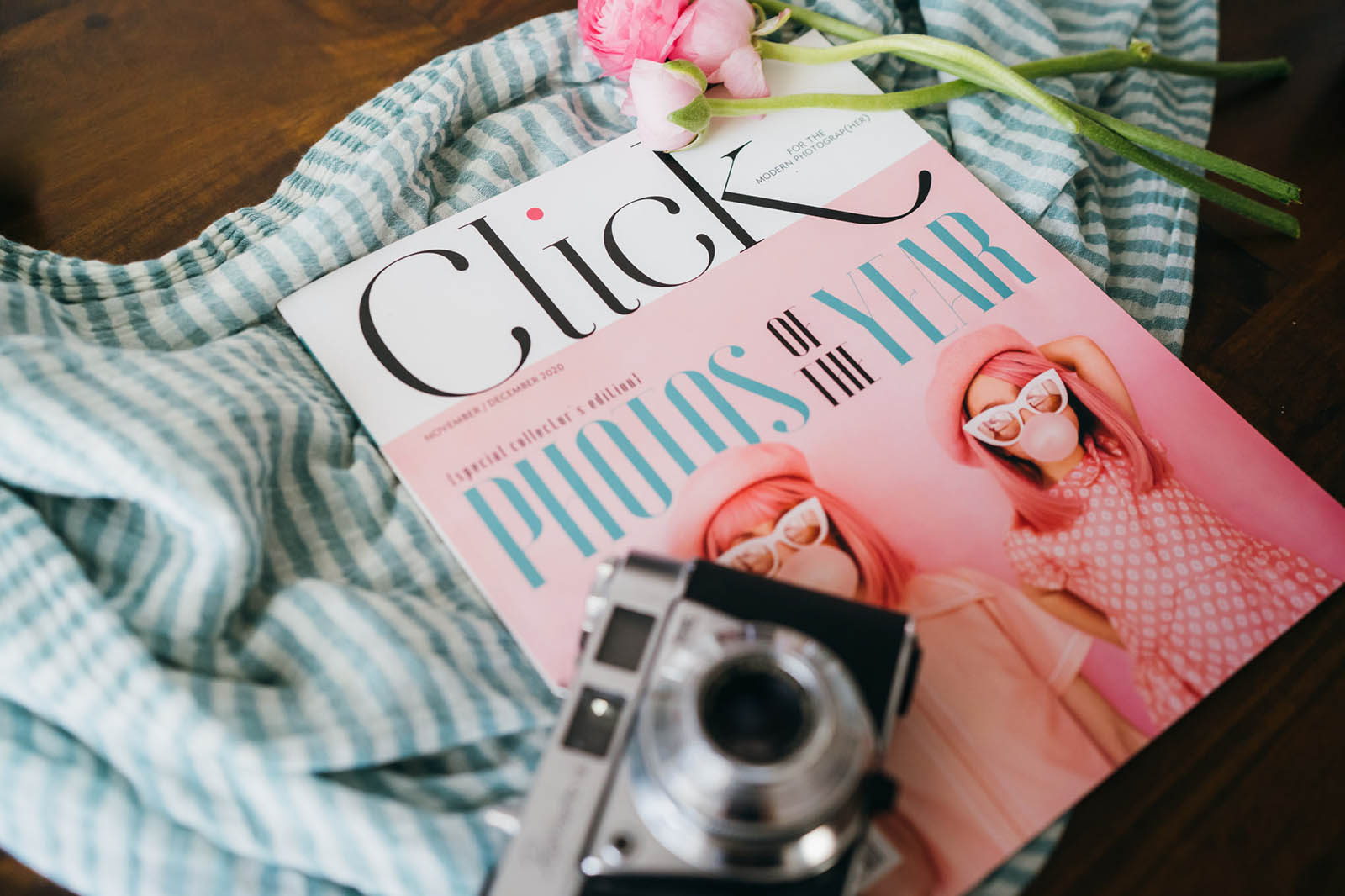
Write it down.
I used to use a bullet journal (which I organized myself) to plan out my photography goals and action steps, but now I use the Kindred Simple Planner to keep track of everything. Any notebook, journal or planner should work just fine.
5. Find an accountability group.
Getting together with one other person or a group can keep you accountable for your goals throughout the year. Just verbalizing your goals to someone else puts them out there and allows someone to check in on you. For years, I’d check in quarterly with a group of friends from different disciplines. That would allow everyone to talk about their progress and reevaluate goals.
Another type of group is an informal mastermind. I’ve been a part of a group like this for the past year. While our group doesn’t set goals, we bounce ideas off of each other and share ideas that eventually get added to my to-do list of ideas to work on throughout the year.
Form a group.
Reach out to your peers, friends in other disciplines or people in other photography groups you are a part of (like Clickin Moms, for example) to find out if others are interested in forming an accountability group. I am in a group that uses Voxer to communicate, but you could use whatever app or platform you’d like.

6. Forgive yourself and move on.
It is OK if you don’t meet all your goals — in fact you shouldn’t. Meeting all your goals means you are probably not challenging yourself enough. This past year, I did half of what I wanted to, which is perfectly OK. Even though you might feel discouraged at the end of the year you can look back at everything you accomplished and then reevaluate for the following year.
Photos by Beth Ann Fricker
